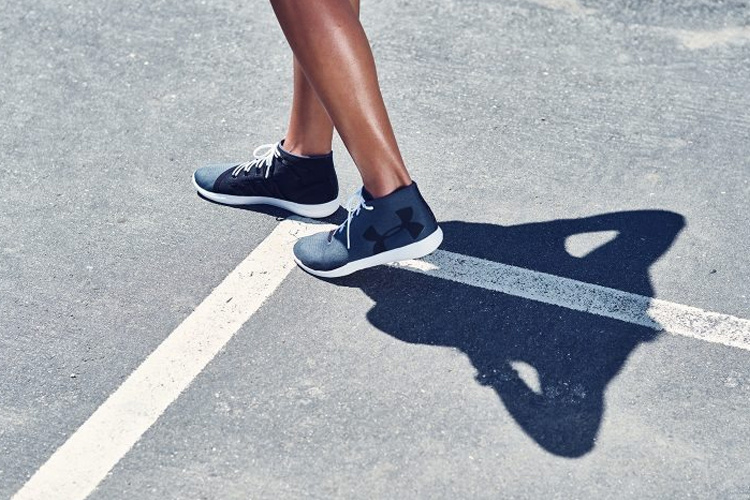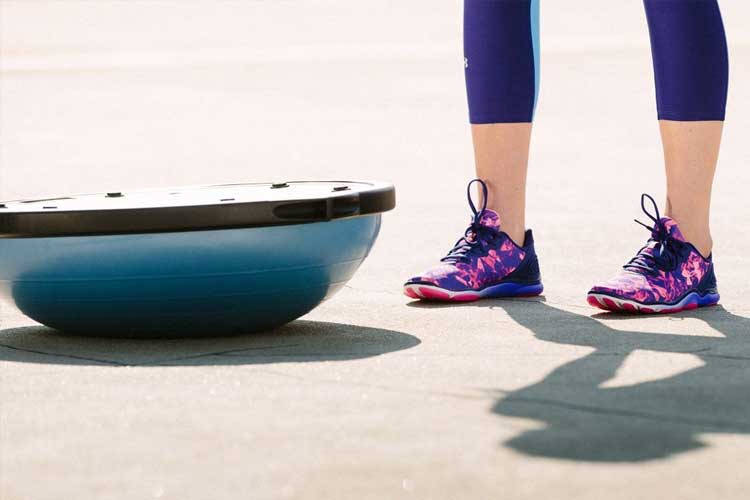Your evening walks might help you reach your step goals, but that doesn’t mean you’re necessarily getting a good workout. For walking to lead to health benefits like decreased risk of heart disease, stronger bones, weight loss, improved sleep and a mood boost, you have to do more than put one foot in front of the other.
If you’re not sure whether your walks meet the criteria for an actual workout, here are five signs your walking routine might be too easy:
1. YOU DON’T BREAK A SWEAT
It’s a good sign when there are beads of sweat on your forehead, and your clothes feel a little damp after a walk. “A gentle stroll, is, quite literally, no sweat for your body,” says Jonathan Ross, spokesperson for the American Council on Exercise and author of “Abs Revealed.”
Increasing the intensity of your walks activates your sweat glands; the more intense the workout, the more likely you are to break a sweat. But sweating is not the only indicator of a good workout, according to Ross.
Your goal should be to break a sweat while hitting your target heart rate, the “aerobic zone” that indicates you’re getting a cardiovascular workout. An ideal target heart rate is at least 60% of your maximum heart rate — and that number depends on your age.
To calculate your maximum heart rate, subtract your age from 220. For example, a 30-year-old would have a maximum heart rate of 190; 60% of 190 is 114 — this is your target beats per minute, which can be checked by putting your finger on the pulse in your neck, or wearing a heart rate monitor.
Aim to spent at least 30 minutes in this target zone. When you do, you’ll surely break a sweat.
2. YOU’RE NOT HITTING WEEKLY EXERCISE TARGETS
The Centers for Disease Control and Prevention guidelines advocate for at least 150 minutes of moderate-intensity physical activity per week. You’ll hit the recommended number of minutes by taking a slow stroll around the block for 30 minutes five evenings per week but you might not get the intensity to be considered adequate physical activity.
If sustaining a moderate-intensity pace for 30 minutes seems daunting, Erin Oprea, USANA Fitness Ambassador and celebrity personal trainer, suggests breaking it up into shorter spurts. Brisk 10-minute walks before work, during lunch and in the evening still count toward your weekly exercise goals. “If you’re busy, getting multiple brisk walks in every day should be on your to do list to get your steps in,” Oprea says.
3. YOU CAN CARRY ON A CONVERSATION
If you’re able to chatter endlessly about the latest episode of “Game of Thrones” without huffing and puffing, you need to pick up the pace. “If we are speaking at normal conversational speed, it’s unlikely that we are working out at a sufficient intensity to deliver a challenge to the body,” Ross explains. “As our intensity goes up, we should notice that we’re able to say fewer and fewer words between breaths.”
It’s OK to talk to your walking partner (or sing along with your workout playlist) but the effort should require you to stop between sentences to catch your breath. “The sweet spot for most people is about 3–6 words spoken before taking a breath,” says Ross.
4. YOUR MUSCLES NEVER ACHE
Walking is a great low-impact exercise but that doesn’t mean it shouldn’t feel like a workout. A lack of muscle aches is a strong sign you’re not pushing yourself hard enough. Your goal is a light muscle ache. If you’re too sore to move the next day, you’ve overdone it and should scale back the intensity on your next walk.
You don’t have to give up walking for running or another workout. Picking up the pace, increasing the distance or changing the terrain can all help fire up your muscles and increase the calorie burn. “Find some hills and sweat a little,” says Oprea.
5. YOU FOLLOW THE SAME ROUTE
It’s easy to find a route you like and stick to it. Over time, your body gets used to a certain pace and terrain; the more you follow the same route, the easier it gets. “Even turning down a few different streets while otherwise following the exact same route is enough to do the trick,” says Ross.
There is no such thing as a “bad” walk. When your goal is walking for exercise and health benefits, it’s essential to make sure your walking routine isn’t too easy — and if it is, challenge yourself to amp it up.
Written by My Fitness Pal
Good news: The effects of a tough workout may last a lot longer than the time you’re in the gym. Thanks to excess postexercise oxygen consumption (EPOC)—also known as the “afterburn effect”—your body may continue to torch calories for up to 36 hours after you stop exercising.
But you don’t reap these benefits from just any exercise. To get the true afterburn effect, fitness pros stress that you have to work out for 15 minutes at greater than 70% of your VO2 max, which stands for maximal oxygen uptake and refers to the amount of oxygen your body is capable of utilizing in 1 minute. This roughly equates to keeping your heart rate at around 140 beats per minute in that time frame. “The more intense the workout, the more oxygen your body will consume afterward and the more calories you’ll burn in return,” says Brandon Mentore, a strength and conditioning coach in the Philadelphia area.
Classes like Orangetheory Fitness are focused on just that, with participants dashing between the treadmill, weights and a rowing machine to produce 12–24 minutes of training at 84% of their maximum heart rate (or the “orange zone,” as it’s known in the class).
READ MORE > THE BEGINNERS GUIDE TO ORANGETHEORY FITNESS
“Doing high-intensity interval training and strength training yields the greatest amount of ‘afterburn,’” says Mentore. “It doesn’t necessarily apply to less intense and more endurance-oriented exercise, like walking or doing a cardio machine at a comfortable pace.”
Read more about targeting your heart rate and getting into a fat-burning zone.
While the specific results of the afterburn effect varies from person to person, experts say you may burn up to an additional 150 calories in the 24–36 hours following your workout. “It can give you a little added boost. One hundred extra calories burned each day is about a half-pound per week or equivalent to walking 1–3 miles,” says Wes Ferguson, a celebrity trainer in Los Angeles.
That’s not to say you can stuff yourself silly after an extra-tough workout. “The afterburn effect isn’t substantial enough so that you can just pig out on anything over the next few hours,” says Ferguson. Instead, snack smart with a mix of complex carbs and protein, a powerful combo that helps boost muscle recovery, reduce soreness and build strength.
Check out these 7 Perfect Post-Workout Snacks for ideas.
Whatever you munch on, practice moderation, stresses Ferguson. “You can’t say, ‘I worked out, that means I get ice cream as a reward!’ Then you’ll just undo everything.”
Written by My Fitness Pal
All too often, individuals blame their unsuccessful attempts at weight loss and dieting on a lack of willpower. Unfortunately relying on willpower to achieve and maintain weight loss isn’t practical or sustainable.
You can’t just will your way to your “happy” weight. Lasting weight loss requires sustainable behavior changes and a healthy relationship with food. These two pieces of the puzzle are nonnegotiable if you’re looking for happiness at your healthy weight (also know as “happy” weight).
While you may be able to lose weight initially on willpower alone, without adopting sustainable behavior changes and a healthy relationship with food, you will gain back the weight or not be satisfied with your body. Willpower and motivation will help to kick-start your health journey, but they will only get you so far. We all lose steam (it’s human nature!) and need a realistic plan to keep going.
5 ACTION STEPS FOR LASTING RESULTS
1. Don’t buy into weight-loss gimmicks. Avoid products or diet plans that promise you can slim down in five days by drinking only juice or eating zero carbs. Anything super extreme that’s far from a balanced diet is only a quick fix, and all too often any weight that is lost on those diets is regained on the rebound. These gimmicks don’t lead to lasting results.
2. Eat foods that are fun, too. Ice cream, pizza, and pumpkin spice lattes are often sworn off when going on a diet. But, this isn’t the best strategy for long-lasting weight loss because it could lead to intense cravings or binge eating. Instead of cutting them out, allow yourself to eat foods that are fun in moderation.
3. Set achievable weight goals. Weight loss doesn’t happen overnight, or in a few days for that matter. If you’re being sold rapid weight loss… turn and run! Losing weight too quickly (more than 1–2 pounds/week) might not sustainable for most people. Set achievable goals, take measurements and re-evaluate your goals every week to stay on track.
4. Learn to decipher hunger and fullness. Knowing what, when and how much to eat is half the battle with weight loss. The good news is you can use your body’s internal hunger and fullness cues to guide you. Note: The people who manage their weight and keep it off without having to diet do this naturally (or have learned this tool over time). If you want to understand your hunger and fullness better, read this article: The Simple Tool That Can Help Prevent Overeating
5. Know your “why.” Do you know your reasons for wanting to lose weight and get healthy? Turn your motivations into more than just willpower; make them your purpose. Write a mission statement to give more meaning to your goals. Getting solid on your “why” runs deep and will fuel a healthy lifestyle.
Don’t beat yourself up again if you have trouble reaching your goals. If you’re feeling like you’ve failed your diet from a lack of willpower, maybe it’s the diet that failed you. Take actions that are sustainable and long-lasting to find your happy weight.
Written by My Fitness Pal
Most of us, particularly if we struggle with our weight goals, have blamed the dreaded “metabolism” monster: “It’s too slow,” we say. We often target it as a common weight-loss enemy without truly knowing the factors that play into metabolism—and whether or not we can change them.
3 Major Things that Determine Your Metabolism
Metabolism refers to the process of converting the calories you eat into energy to power all of your bodily processes. Your metabolism determines the amount of calories you can eat all day and still maintain your weight. It’s affected by three major things:
- Basal metabolic rate (BMR): Tells you the number of calories needed to maintain your body in a rested, fasting state. It’s affected by your gender, age, size, muscle mass, genetics and health-related factors. Your BMR accounts for 60-70% of the total calories you burn each day.
- Activity level: Tells you the number of calories you use up during exercise. Your activity level accounts for about 20% of the total calories you burn each day.
- Food thermogenesis: Tells you the number of calories you need to digest and absorb your food. It accounts for about 10% of the total calories you burn each day.
Anything that affects the three major things mentioned above would change the amount of calories you need to maintain your body weight. Your basal metabolic rate is adaptable, and it will increase or decrease to provide for your body’s needs. For example:
- Your metabolism dials up and burns more calories during a fever or infection to help you heal.
- Your metabolism dials down and burns less calories during a long fast to conserve calories and prevent you from wasting away.
How Aging Affects Metabolism
If you’re a healthy adult, your metabolism is likely a-okay. Instead of blaming thyroid diseases, relatively rare culprits of a slowed metabolism, you should consider how aging slows metabolism—and implement strategies to fight back. Aging happens to everyone, and it’s usually accompanied by a decrease in BMR. Why?
Our BMR is naturally at its highest during childhood and adolescence, mainly because we need the extra calories to grow and mature into adulthood. Once we reach our 20s, this phase is complete and our BMR levels off. The trend here on out is sneaky, steady weight gain over the course of decades. Research published in the New England Journal of Medicine revealed the weight-gain trends of 120,000 participants for up to 20 years. Scientists found that participants gained about 3.4 pounds (1.5 kilograms) each over a four-year period, which translates to a gain of 16.8 pounds (7.6 kilograms) over 20 years.
The biggest issue isn’t so much the weight gain, but the type of weight we tend to gain as we age; most of us tend to lose lean muscle mass and correspondingly replace it with fat. In a typical young adult, lean muscle mass makes up about 50% of total body weight, which declines to about 25% of total body weight when that individual reaches 75-80 years old. Having lower lean muscle mass decreases our BMR since, pound for pound, it takes more energy to maintain muscle compared to fat.
Don’t get me wrong! Having a protective amount of fat is a good thing, especially when we hit an older age, which is why adults aged 65 and older are advised to maintain a BMI between 25 to 27, instead of the 18.5 to 24.9 recommendation for the rest of us. The goal, of course, is to maintain as much lean muscle mass as possible since doing so would…
- Stop your BMR from declining. It has been shown time and again that BMR naturally decreases as we age. But, if you can maintain or build upon the muscle mass that you have, you’ll have a higher BMR (compared to if you took no action).
- Preserve your muscles’ ability to propel you through all of life’s activities. Even if you don’t care about your metabolism, aim to maintain and build muscle because this allows you to live your life to the fullest. Muscles are involved in every movement you make, from playing with your child to carrying a load of groceries.
Ways to Combat a Slowing Metabolism
- Aim to strength train at least 2-3 times per week (hint, hint: This is the most important tip!). Whether you’re a gal or guy, prioritize weight lifting in your exercise plan. Adding muscle mass increases your BMR, allowing you to burn more calories even when you’re not exercising. If you’re a newbie to strength training, check out So You Want to Start…Strength Training.
- Ramp up the intensity of your aerobic exercise (think running, swimming, biking faster). Exercising at higher intensities allows you to reap the benefits of “after burn,” a phenomena where you burn extra calories post-exercise. To benefit from this effect, you should run, jump, dance, swim, bike, etc. at a pace where it’s difficult to talk. If you can push a little harder, then do so.
- Eat enough protein from high-quality sources. High-quality protein sources supply amino acids to your muscles post-exercise so that they can repair and grow. To learn more about how to determine your protein needs, check out this Beginner’s Guide to Protein.
- Stay well hydrated. Water is important because all of the chemical reactions in your body requires water—including the ones that burn calories. To work on drinking more water each day, check out 20 Lifehacks for Drinking More Water.
- Don’t starve yourself in order to lose weight. You need to consume a moderate amount of calories in order to lose weight. If you eat a significantly low amount of calories, you’ll lose weight rapidly but much of it will be from water and muscle loss. Plus, you’ll likely lose hard-earned muscle mass that’s responsible for maintaining a higher BMR.
Written By My Fitness Pal




